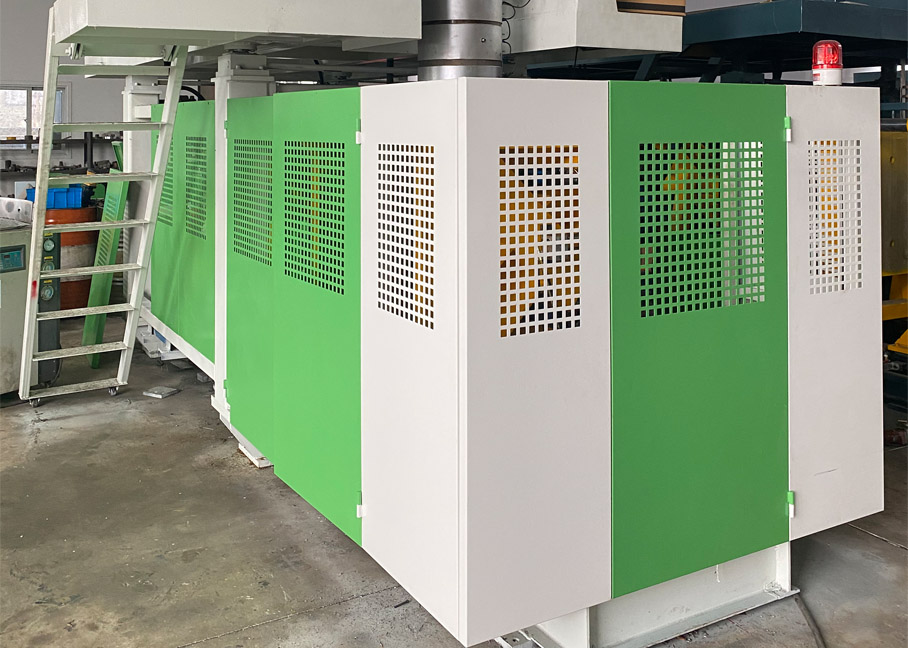
It is well known that there are three-state changes in many substances in nature: gas, liquid, and solid; but this is only limited to crystalline substances, and the plastics that we come into contact with every day are non-crystalline substances. It can also be said that plastics are mixtures. Existing in the form of, Kay Plastic will take everyone to understand the "three-state change" in the plastic molding process.
During the plastic molding process of the blow molding machine, the temperature rises slowly. When the processing temperature is in a lower temperature environment, the polymer is in a rigid solid state, with only a small deformation under the action of external force, which is similar to glass, so it is called this This state is glassy. If the ambient temperature is raised to a certain temperature, its shape will change significantly under the action of external force. Within a certain temperature range, the shape change will be relatively stable. This state is called the high elastic state. If the temperature continues to rise, the amount of deformation will gradually increase with the increase in temperature until it becomes a viscous fluid, at which time its shape cannot be restored, and this state is a viscous fluid state. Generally, the transition from the glass state to the high elastic state is called the glass transition. The temperature range during the morphological transition is called the glass transition temperature and the transition from the high elastic state to the viscous flow state. The temperature in this transition process is called the viscous flow temperature. The processing and molding of plastic products are all completed in a viscous fluid state.
Glass transition temperature of blow molding machine
The temperature at which a polymer changes from a highly elastic state to a glass state refers to the temperature at which an amorphous polymer (including the non-crystalline part of a crystalline polymer) changes from a glass state to a high elastic state or from the latter to the former. The minimum temperature at which the macromolecular segment of the styling polymer can move freely depends on the measurement method and conditions. An important process index for polymers. Above this temperature, the polymer exhibits elasticity;
Below this temperature, high polymers exhibit brittleness, which must be considered when used as plastics, rubbers, synthetic fibers, etc. For example, the glass transition temperature of polyvinyl chloride is 80°C. However, it is not the upper limit of the working temperature of the product. For example, the working temperature of rubber must be above the glass transition temperature, otherwise it will lose high elasticity.
Viscous flow temperature of blow molding machine: The temperature at which the polymer changes from a highly elastic state to a viscous flow state is called the viscous flow temperature. This polymer in a fluid state is called a melt. The macromolecules in the melt are in a disordered state, and the chain segments are entangled with each other, and internal friction is generated during flow to perform viscous flow motion. The viscous flow state is usually the processing state of the material, and the viscous flow temperature is the lowest processing temperature of the hot melt material. Therefore, mastering the viscous flow temperature and viscous flow laws of polymers is extremely important for the processing and molding of polymers.
Decomposition temperature of blow molding machine: When the temperature of the polymer in a viscous fluid state is further increased, the degradation of the molecular chain will be aggravated, and the temperature at which the molecular chain of the polymer is significantly degraded is the decomposition temperature.